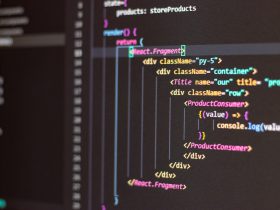Machine learning and predictive analytics have become buzzwords in today’s data-driven world. With the exponential growth of data, businesses and organizations are realizing the immense potential of leveraging this information to make informed decisions and gain a competitive edge. Machine learning is the key that unlocks this potential by efficiently analyzing vast amounts of data and generating valuable insights.
Machine learning is a subfield of artificial intelligence (AI) that focuses on enabling computers to learn from data and improve over time without being explicitly programmed. It involves developing algorithms that can automatically extract patterns, make predictions, and learn from experience. These algorithms are built using statistical modeling techniques that allow the computer to understand complex datasets and uncover hidden relationships.
Predictive analytics, on the other hand, is the application of machine learning algorithms to make predictions about future events or outcomes based on historical data. By analyzing patterns and trends in the data, predictive analytics can assist businesses in making informed decisions, minimizing risks, and optimizing various processes.
One of the primary reasons why machine learning and predictive analytics have gained such popularity is their ability to analyze vast amounts of data quickly and accurately. Traditional methods of data analysis are time-consuming and often error-prone, requiring human experts to manually sift through data and identify patterns. Machine learning algorithms are designed to handle massive datasets effortlessly, extracting valuable insights and making predictions in real-time.
Moreover, machine learning algorithms have the advantage of being able to learn from new data continuously. As more data is fed into the algorithms, they become better at making predictions, adapting to changing patterns, and reducing errors. This iterative learning process allows organizations to stay ahead in a dynamic and evolving environment.
Machine learning and predictive analytics find applications across various industries today. For example, in the healthcare sector, predictive analytics can be used to identify patients at high risk of developing certain diseases, enabling early intervention and personalized care plans. In finance, machine learning algorithms can analyze market trends, predict stock prices, and guide investment decisions. In supply chain management, predictive analytics can optimize inventory levels, anticipate demand fluctuations, and streamline logistics operations.
Despite their numerous benefits, machine learning and predictive analytics also pose challenges. One major challenge is the need for high-quality, reliable data. Machine learning algorithms heavily rely on the data provided to them, and if the data is incomplete, inaccurate, or biased, the predictions made can be flawed. Data privacy and security are also significant concerns, as organizations need to ensure compliance with regulations and protect sensitive information.
To overcome these challenges and reap the benefits of machine learning and predictive analytics, organizations need to invest in building a robust data infrastructure. This includes data collection, cleansing, and storage mechanisms to ensure data quality and accessibility. Additionally, employing skilled data scientists and analysts who can design and deploy machine learning models is crucial.
Summary
Machine learning and predictive analytics are transforming the way businesses operate in a data-driven future. By harnessing the power of vast amounts of data and leveraging algorithms that can learn and make predictions, organizations can gain valuable insights, make informed decisions, and stay ahead in a competitive landscape. Embracing this technology and investing in data-driven strategies will undoubtedly pave the way for success in the digital age.



















Leave a Reply